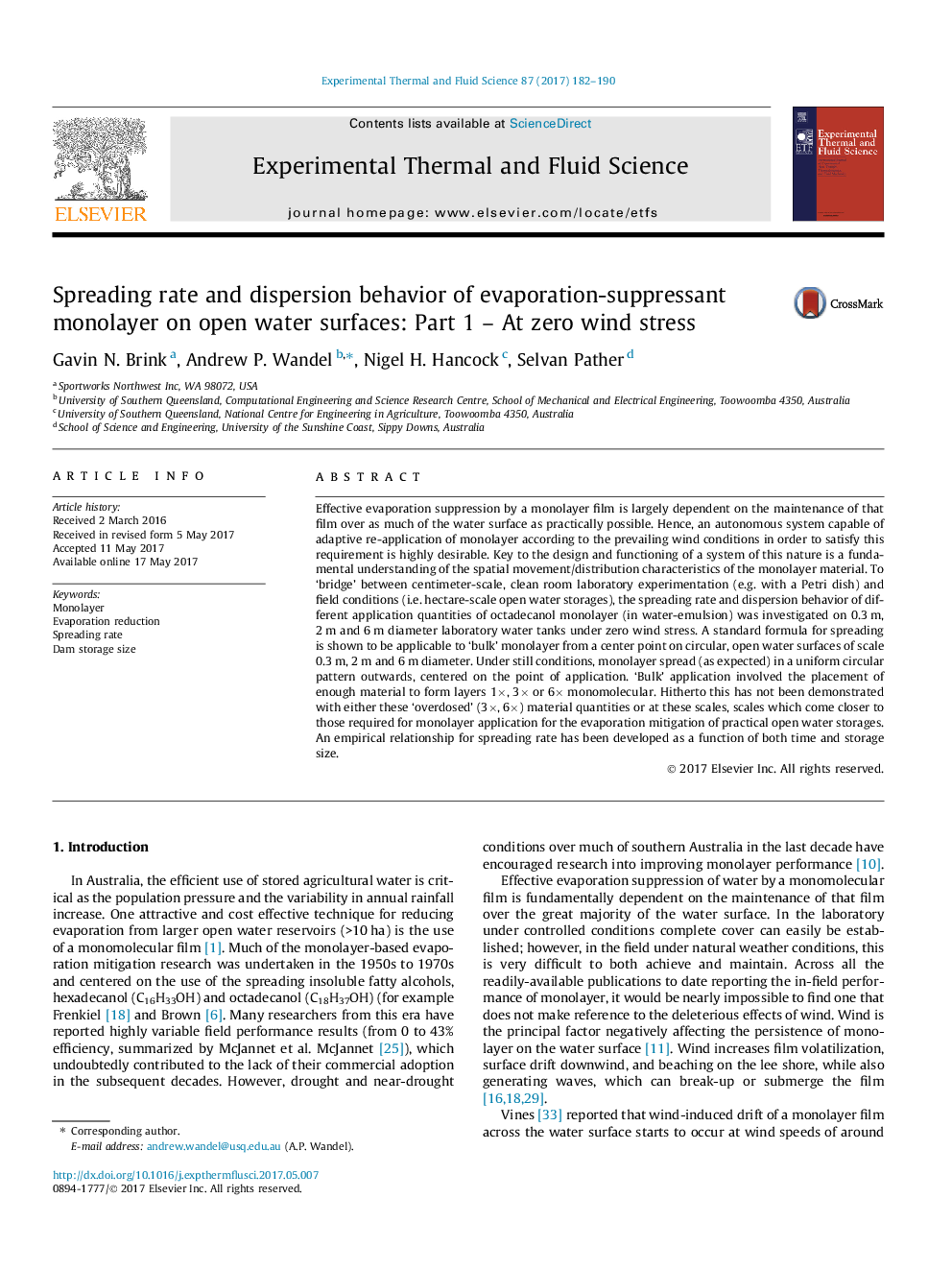| Article ID | Journal | Published Year | Pages | File Type |
|---|---|---|---|---|
| 4992704 | Experimental Thermal and Fluid Science | 2017 | 9 Pages |
Abstract
Effective evaporation suppression by a monolayer film is largely dependent on the maintenance of that film over as much of the water surface as practically possible. Hence, an autonomous system capable of adaptive re-application of monolayer according to the prevailing wind conditions in order to satisfy this requirement is highly desirable. Key to the design and functioning of a system of this nature is a fundamental understanding of the spatial movement/distribution characteristics of the monolayer material. To 'bridge' between centimeter-scale, clean room laboratory experimentation (e.g. with a Petri dish) and field conditions (i.e. hectare-scale open water storages), the spreading rate and dispersion behavior of different application quantities of octadecanol monolayer (in water-emulsion) was investigated on 0.3Â m, 2Â m and 6Â m diameter laboratory water tanks under zero wind stress. A standard formula for spreading is shown to be applicable to 'bulk' monolayer from a center point on circular, open water surfaces of scale 0.3Â m, 2Â m and 6Â m diameter. Under still conditions, monolayer spread (as expected) in a uniform circular pattern outwards, centered on the point of application. 'Bulk' application involved the placement of enough material to form layers 1Ã, 3Ã or 6Ã monomolecular. Hitherto this has not been demonstrated with either these 'overdosed' (3Ã, 6Ã) material quantities or at these scales, scales which come closer to those required for monolayer application for the evaporation mitigation of practical open water storages. An empirical relationship for spreading rate has been developed as a function of both time and storage size.
Related Topics
Physical Sciences and Engineering
Chemical Engineering
Fluid Flow and Transfer Processes
Authors
Gavin N. Brink, Andrew P. Wandel, Nigel H. Hancock, Selvan Pather,
